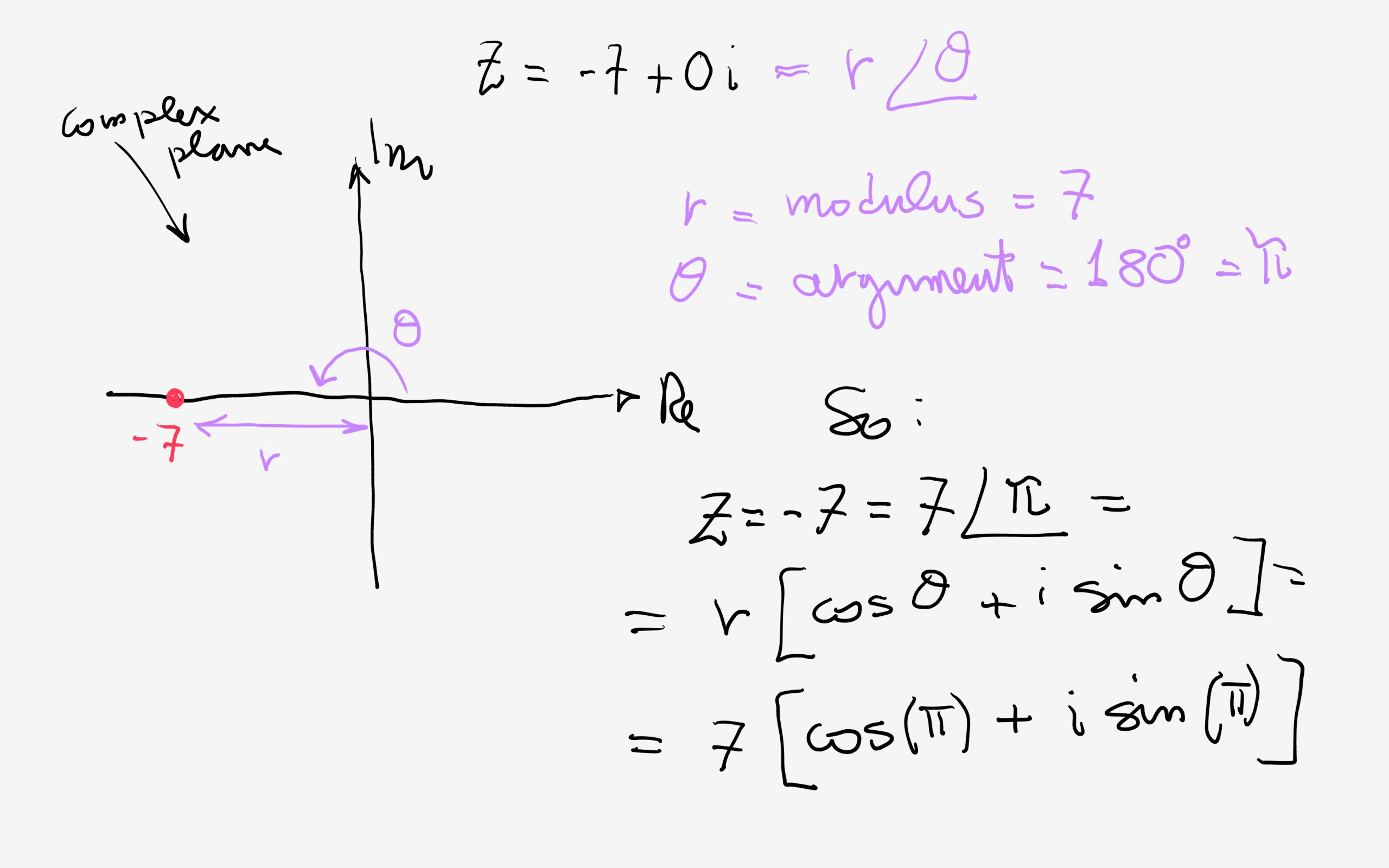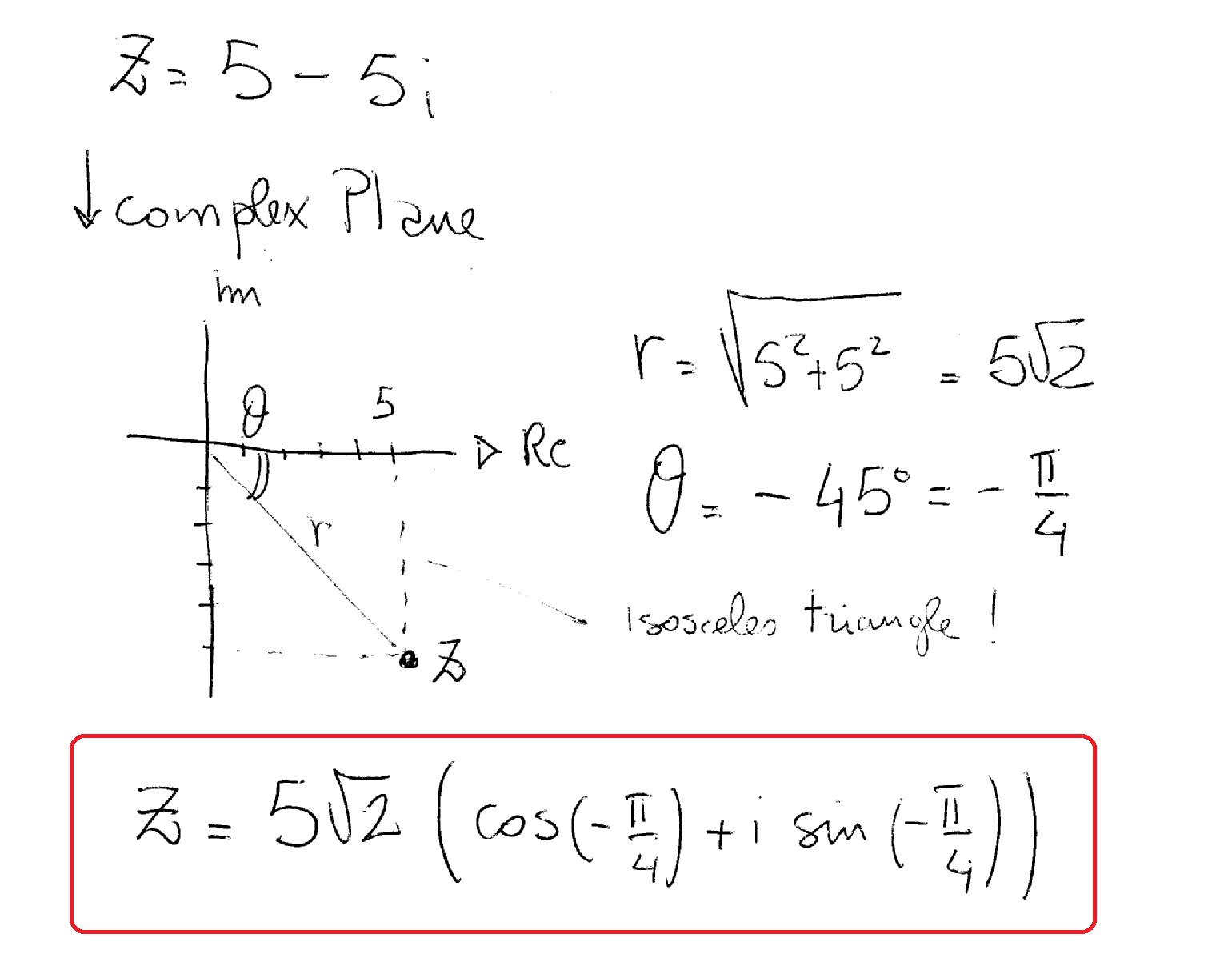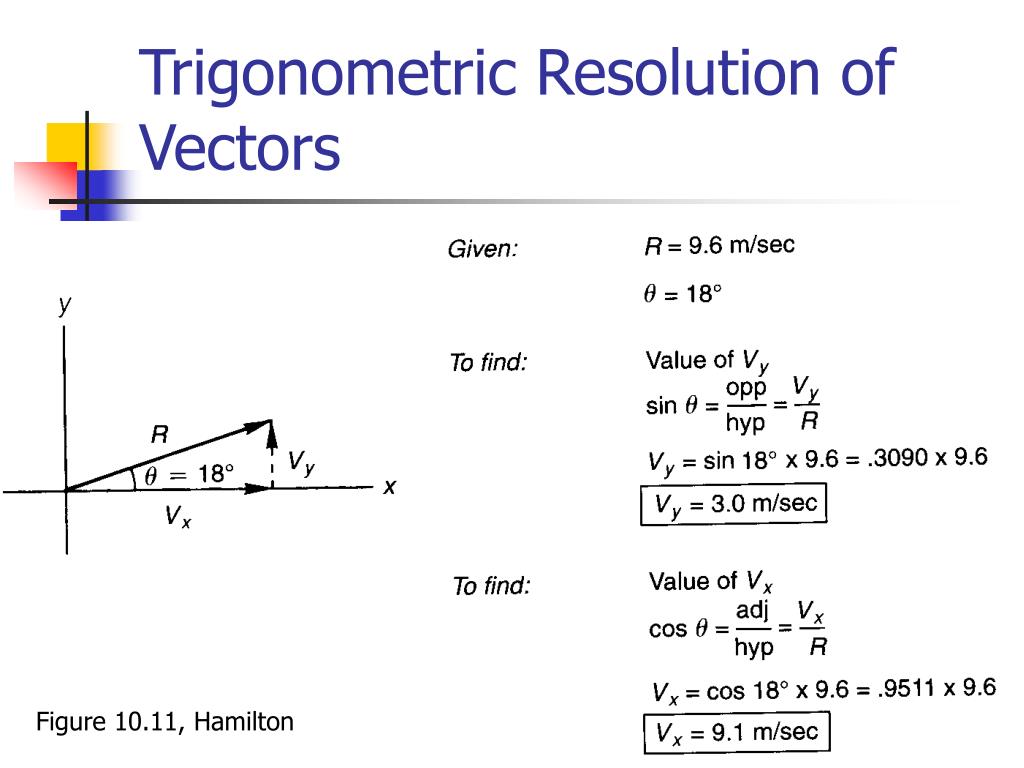Trigonometric Form Of A Vector
Trigonometric Form Of A Vector - The direction of a vector is only fixed when that vector is viewed in the coordinate plane. Given the coordinates of a vector (x, y), its magnitude is. Want to learn more about vector component form? Web z = r(cos(θ) + isin(θ)). Both component form and standard unit vectors are used. Two vectors are shown below: Plug the solutions into the definition of. Component form in component form, we treat the vector as a point on the coordinate plane, or as a directed line segment on the plane. Web what lives trigonometry form? 2.1.6 give two examples of vector quantities.
Web the sum of two vectors \(\vec{u}\) and \(\vec{v}\), or vector addition, produces a third vector \(\overrightarrow{u+ v}\), the resultant vector. The angle θ is called the argument of the argument of the complex number z and the real number r is the modulus or norm of z. This is much more clear considering the distance vector that the magnitude of the vector is in fact the length of the vector. To find \(\overrightarrow{u + v}\), we first draw the vector \(\vec{u}\), and from the terminal end of \(\vec{u}\), we drawn the vector \(\vec{v}\). And then sine would be the y component. Component form in component form, we treat the vector as a point on the coordinate plane, or as a directed line segment on the plane. Web what are the different vector forms? 2.1.1 describe a plane vector, using correct notation.; Web trigonometry the component form of a vector is given as < x, y >, where x describes how far right or left a vector is going and y describes how far up or down a vector is going. This formula is drawn from the **pythagorean theorem* {math/geometry2/specialtriangles}*.
This is much more clear considering the distance vector that the magnitude of the vector is in fact the length of the vector. Web solving for an angle in a right triangle using the trigonometric ratios: Want to learn more about vector component form? Right triangles & trigonometry sine and cosine of complementary angles: Both component form and standard unit vectors are used. Web to find the direction of a vector from its components, we take the inverse tangent of the ratio of the components: The trigonometric ratios give the relation between magnitude of the vector and the components of the vector. Web in trigonometry, trigonometric identities are equalities that involve trigonometric functions and are true for every value of the occurring variables for which both sides of the equality are defined. 2.1.5 express a vector in terms of unit vectors.; Since displacement, velocity, and acceleration are vector quantities, we can analyze the horizontal and vertical components of each using some trigonometry.
18+ trigonometric form of a vector KhailaMillen
Want to learn more about vector component form? Given the coordinates of a vector (x, y), its magnitude is. Web a vector [math processing error] can be represented as a pointed arrow drawn in space: Web what lives trigonometry form? $$v_x = \lvert \overset{\rightharpoonup}{v} \rvert \cos θ$$ $$v_y = \lvert \overset{\rightharpoonup}{v} \rvert \sin θ$$ $$\lvert \overset{\rightharpoonup}{v} \rvert = \sqrt{v_x^2 +.
Trigonometric Form To Polar Form
2.1.6 give two examples of vector quantities. 2.1.5 express a vector in terms of unit vectors.; Web draw the vector. And then sine would be the y component. Web how to write a component form vector in trigonometric form (using the magnitude and direction angle).
Trigonometric chart Cuemath
This is the trigonometric form of a complex number where |z| | z | is the modulus and θ θ is the angle created on the complex plane. Component form in component form, we treat the vector as a point on the coordinate plane, or as a directed line segment on the plane. The direction of a vector is only.
Trigonometric Form To Standard Form
Web the sum of two vectors \(\vec{u}\) and \(\vec{v}\), or vector addition, produces a third vector \(\overrightarrow{u+ v}\), the resultant vector. −→ oa and −→ ob. Web in trigonometry, trigonometric identities are equalities that involve trigonometric functions and are true for every value of the occurring variables for which both sides of the equality are defined. When we write z.
Trigonometric Form To Standard Form
This is much more clear considering the distance vector that the magnitude of the vector is in fact the length of the vector. Web what are the different vector forms? Web the vector and its components form a right angled triangle as shown below. Whereby to write complex numbers for advanced shape? $$v_x = \lvert \overset{\rightharpoonup}{v} \rvert \cos θ$$ $$v_y.
Trig Form of a Vector YouTube
To find \(\overrightarrow{u + v}\), we first draw the vector \(\vec{u}\), and from the terminal end of \(\vec{u}\), we drawn the vector \(\vec{v}\). How to write a component. Given the coordinates of a vector (x, y), its magnitude is. This formula is drawn from the **pythagorean theorem* {math/geometry2/specialtriangles}*. Right triangles & trigonometry modeling with right triangles:
The Product and Quotient of Complex Numbers in Trigonometric Form YouTube
Right triangles & trigonometry modeling with right triangles: Web the vector and its components form a right angled triangle as shown below. Plug the solutions into the definition of. Two vectors are shown below: ˆu = < 2,5 >.
Vector Components Trigonometry Formula Sheet Math words, Math quotes
Right triangles & trigonometry the reciprocal trigonometric ratios: ˆu = < 2,5 >. Magnitude & direction form of vectors. Web solving for an angle in a right triangle using the trigonometric ratios: Web the sum of two vectors is known as the resultant, and you can use trigonometry to help you find it.
PPT Introduction to Biomechanics and Vector Resolution PowerPoint
Right triangles & trigonometry the reciprocal trigonometric ratios: The trigonometric ratios give the relation between magnitude of the vector and the components of the vector. 2.1.6 give two examples of vector quantities. −→ oa = ˆu = (2ˆi +5ˆj) in component form. ˆu = < 2,5 >.
Vectors in Trigonmetric Form YouTube
Want to learn more about vector component form? The vector in the component form is v → = 〈 4 , 5 〉. −→ oa = ˆu = (2ˆi +5ˆj) in component form. The direction of a vector is only fixed when that vector is viewed in the coordinate plane. 2.1.5 express a vector in terms of unit vectors.;
Right Triangles & Trigonometry Modeling With Right Triangles:
This formula is drawn from the **pythagorean theorem* {math/geometry2/specialtriangles}*. Component form in component form, we treat the vector as a point on the coordinate plane, or as a directed line segment on the plane. Magnitude & direction form of vectors. Plug the solutions into the definition of.
And Then Sine Would Be The Y Component.
In the above figure, the components can be quickly read. The trigonometric ratios give the relation between magnitude of the vector and the components of the vector. Web draw the vector. 2.1.3 express a vector in component form.;
2.1.4 Explain The Formula For The Magnitude Of A Vector.;
Web how to write a component form vector in trigonometric form (using the magnitude and direction angle). Web the sum of two vectors is known as the resultant, and you can use trigonometry to help you find it. $$v_x = \lvert \overset{\rightharpoonup}{v} \rvert \cos θ$$ $$v_y = \lvert \overset{\rightharpoonup}{v} \rvert \sin θ$$ $$\lvert \overset{\rightharpoonup}{v} \rvert = \sqrt{v_x^2 + v_y^2}$$ $$\tan θ = \frac{v_y}{v_x}$$ This is much more clear considering the distance vector that the magnitude of the vector is in fact the length of the vector.
Web Trigonometry The Component Form Of A Vector Is Given As < X, Y >, Where X Describes How Far Right Or Left A Vector Is Going And Y Describes How Far Up Or Down A Vector Is Going.
Z = a+ bi = |z|(cos(θ)+isin(θ)) z = a + b i = | z | ( cos ( θ) + i sin ( θ)) Web to find the direction of a vector from its components, we take the inverse tangent of the ratio of the components: Using trigonometry the following relationships are revealed. Want to learn more about vector component form?









